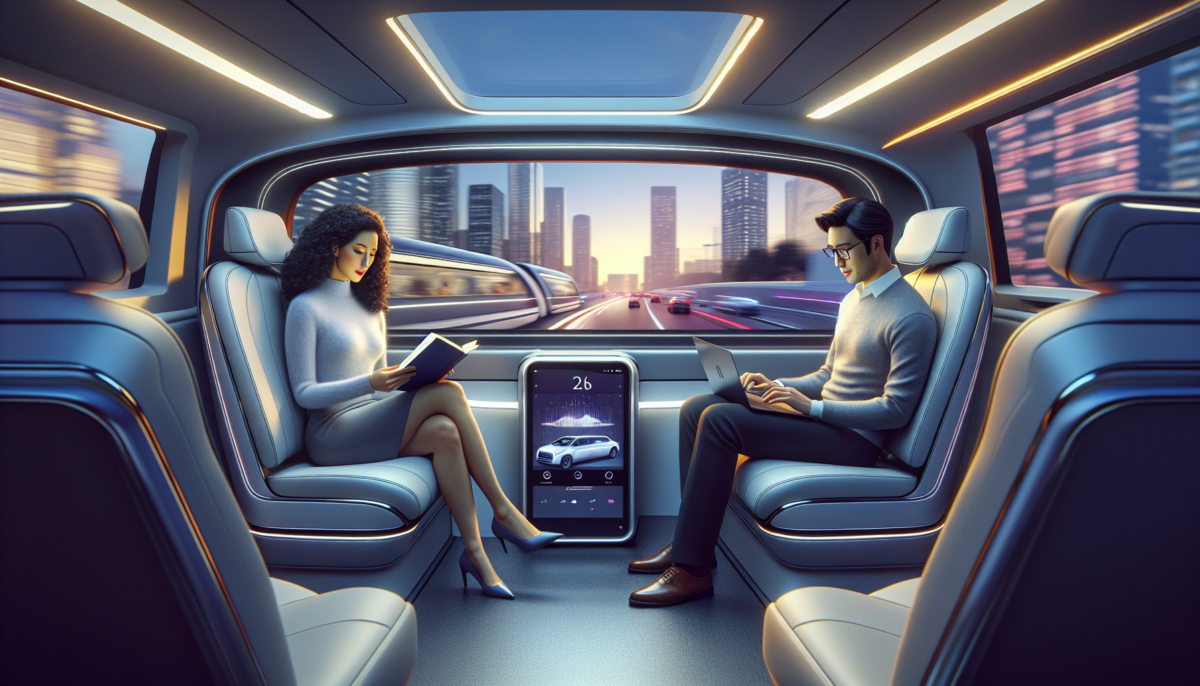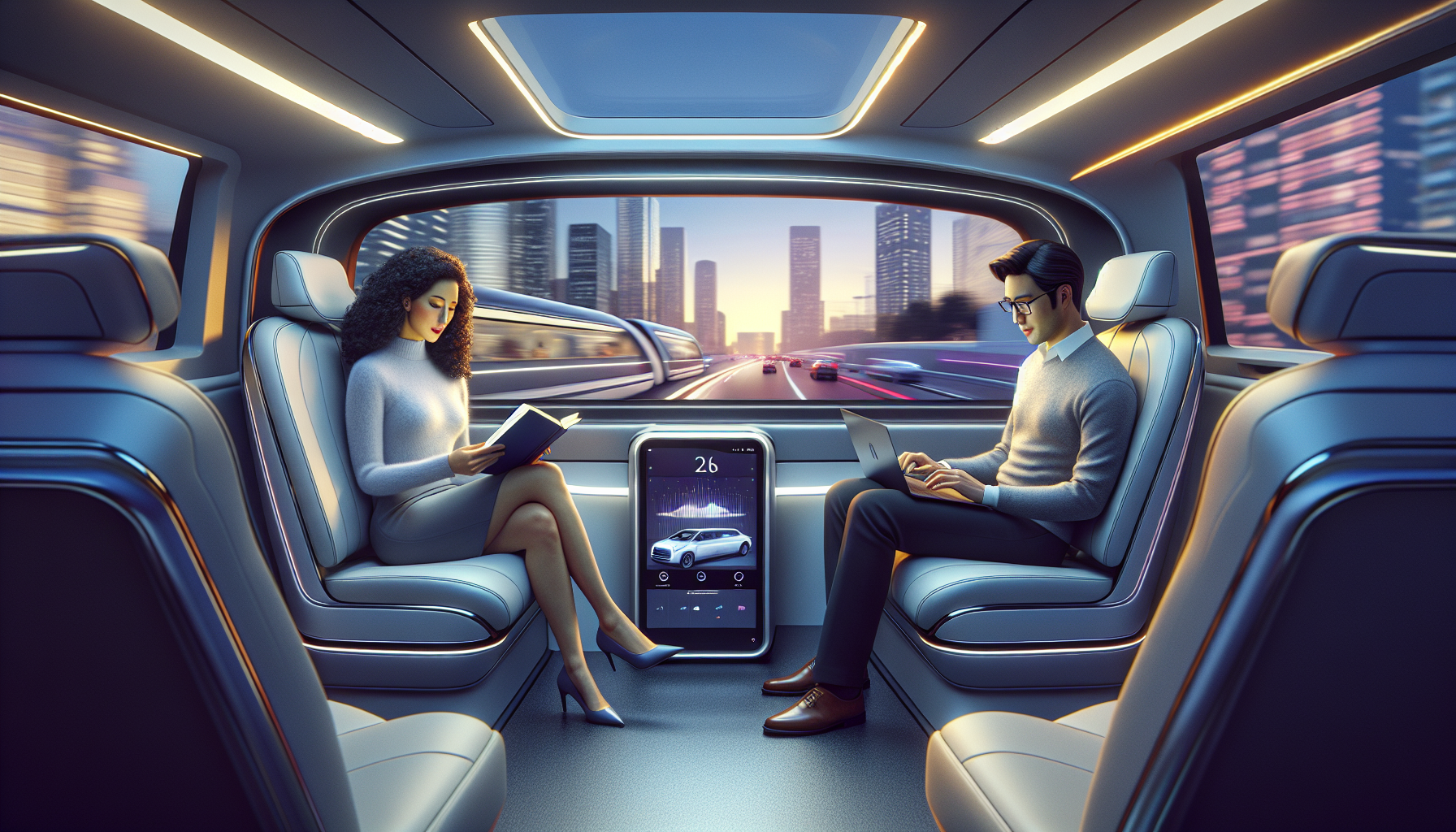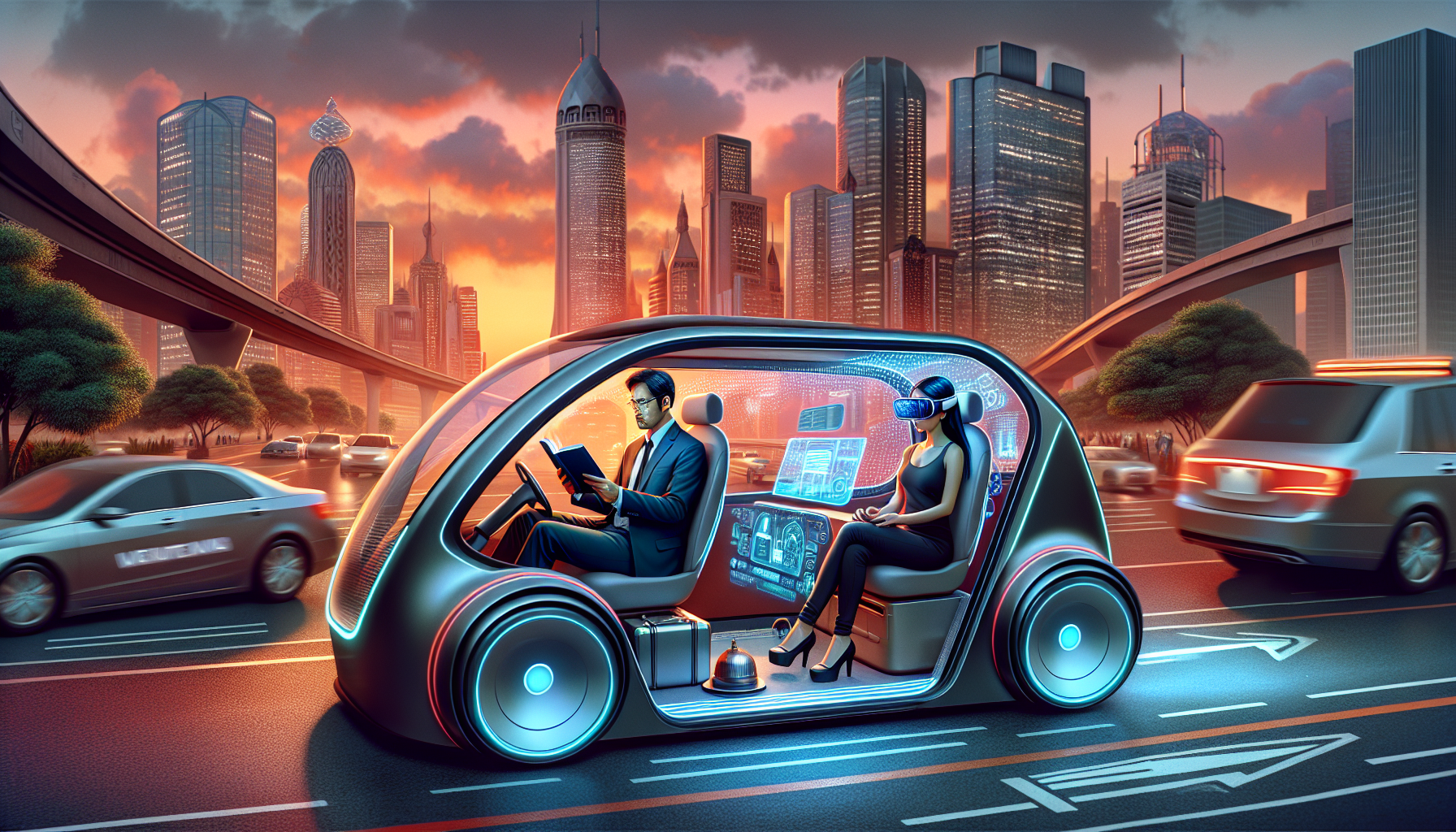“With Autonomous Vehicles, How Will You Maximize Your Travel Time?”
We independently review everything we recommend. When you buy through our links, we may earn a commission which is paid directly to our Australia-based writers, editors, and support staff. Thank you for your support!

How Will You Spend Your Time in a Self-Driving Tesla Robotaxi?
The latest Tesla video, entitled ‘The Future is Autonomous’, highlights the forthcoming Cybercab robotaxi and gives a preview of the future of transportation. As autonomous driving gains prominence, the necessity for human drivers diminishes, paving the way for innovative uses of commute time. Whether it’s for productivity or entertainment, the opportunities are vast. But how could Australians optimise their experience in a self-driving vehicle?
Quick Snapshot
- Tesla’s forthcoming Cybercab robotaxi provides a sneak peek into the future of self-sufficient commuting.
- Riders can utilize the journey for remote work, participate in video conferences, or unwind.
- The Cybercab includes features like video calls, pet-friendly options, and child safety settings.
- There are worries about merging work and personal time, leading to potential unpaid overtime during commutes.
- Robotaxi personalisation allows for choices in seating, entertainment, and more.
Cybercab and Productivity: The Evolving Commute
The notion of working from your vehicle might seem unrealistic, yet Tesla’s Cybercab video implies it could soon become commonplace. A notable moment in the footage shows a video call happening in the vehicle, featuring seven participants. The Cybercab’s interior camera broadcasts live video of the passenger. Titled ‘Weekly Design Team Sync Up,’ this indicates the future potential of starting your workday while commuting.
In this vision, employees might depart from home later, begin working as soon as they enter the robotaxi, and clock in during the journey. This newfound adaptability could ease the pressure of being late due to congested traffic, a frequent problem in Australia’s larger cities like Sydney and Melbourne.
Nonetheless, there is a downside. The fusion of commute and work time might obscure the lines between personal and professional life. The urge to check emails or join meetings during transit could result in unpaid overtime, raising concerns about the balance between work and life.
Work-Life Boundaries at Risk
While the ability to work while commuting presents a significant benefit, it also risks transforming previously personal time into unpaid work. Employers may expect their employees to be productive during rides, thus lengthening the workday without added payment. This situation could spark new conversations about employees’ rights and equitable compensation for time spent working while in transit.
Leisure and Relaxation: A Fresh Commute Experience
Aside from productivity, the Cybercab boasts a variety of leisure and relaxation options. Picture starting a film on your journey to work and monitoring how much time remains relative to your expected arrival—this is a feature Tesla teased during the robotaxi launch. Passengers can pause the movie, leave the vehicle, and pick up the film later, ensuring a smooth entertainment experience across several trips.
For those desiring to unwind, the Cybercab includes a night mode. One segment shows a passenger dozing off peacefully at 1:06 AM, with the display dimmed to lower brightness, only showcasing the time and a discreet progress bar. This feature could attract night-shift workers or anyone needing a rest on their way home.

Travelling with Pets and Children
Pets in a robotaxi? Tesla appears to believe so. The video presents a “Cybercab Dog Mode,” indicating that pets can travel independently. However, this raises concerns regarding vehicle safety and cleanliness, particularly in shared robotaxis. Would Australians feel confident entrusting their pets to a robotaxi?
On the family side, a segment displaying children riding in the Cybercab underscores the opportunity for autonomous vehicles to transport kids safely. Parents could use the Tesla app to summon a robotaxi to collect their kids from school, with live tracking of the journey. The fare would naturally be charged to the parent’s account, ensuring convenience and reassurance.

Personalisation and Comfort
Upon entering the Cybercab, the vehicle welcomes you with a customised greeting. Your seating position, temperature preferences, and possibly even your favourite music or movie selections are preloaded, making each trip distinctively yours. Tesla’s app will alert you when your ride is three minutes away, simplifying the entire experience.
This degree of personalisation might reach beyond mere comfort. Tesla has hinted at the possibility of syncing entertainment choices across various rides, ensuring no matter where you embark or disembark, your chosen movie or music playlist continues right from where you paused.
Ride Pricing and the Robotaxi Business Framework
A lingering question concerns the fare structure for robotaxi services. Will Tesla price rides by the minute, by distance, or based on the duration spent in the vehicle? If you keep the taxi waiting while you run errands, will there be an additional charge for that service?
As robotaxi services grow, they might implement dynamic pricing strategies akin to those employed by firms like Uber and Lyft. Although the cost for drivers will be eliminated with autonomous driving, expenses related to vehicle maintenance, cleaning, and recharging will still play a role in determining costs.
Conclusion
Tesla’s Cybercab presents a fascinating outlook on the future of commuting, where passengers can effortlessly intertwine work, entertainment, and relaxation. As the technology behind self-driving advances, commuters may find themselves working while on the move, enjoying films, or even sending their kids or pets on independent rides. However, possible downsides such as blurred work-life lines and changing pricing strategies could present challenges. For Australians, this innovative travel mode might dramatically transform how we perceive commuting and managing time.
